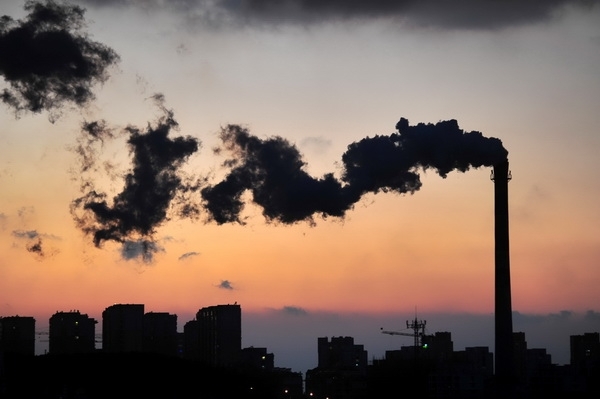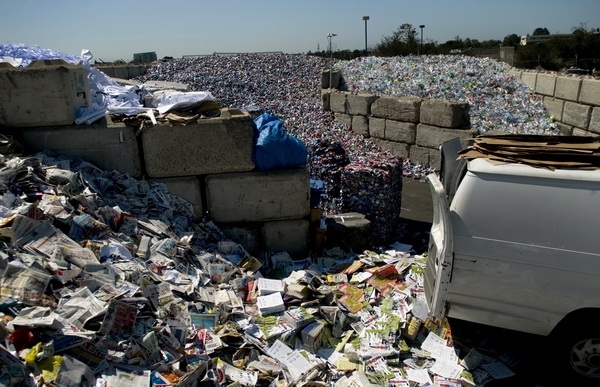

Highlights from the EO print edition, No. 586, Sep 10, 2012

Why China's Steel Mills Continue to Expand Capacity
News, Cover
~ China's annual crude steel production capacity is now more than 900 million tons–160 million tons in excess of demand. Yet that capacity continues to increase.
~ According to the Metallurgical Industry Economic Development Research Center, there are 58 blast furnaces to be built by the end of the year, which will increase capacity by 84 million tons.
~ "It costs about 2,800 yuan to refine a ton of metal, but the factory price of steel has already dropped to 3,100 yuan, and it's still in decline," said the person in charge of Wu'an Yuhua Steel Co. Ltd.
~ Although domestic demand for steel is in a downturn, steel mills are still operating as usual. The most they will do is to limit production, managers from Rizhao Steel and the Jinan Branch of Shandong Steel told the Economic Observer.
~ Limiting production is better than shutting down, Wan Xihe (万喜河), president of Hebei New Wu'An Iron and Steel Group explained. Shutting down is actually expensive. The cost to turn back on a 1,080 cubic meter blast furnace is 10-20 million yuan. So what most steel mills do is limit production. This might also result in a loss, but at least it won’t lose too much, Wan told the EO.
~ Hou Zhiyun (侯志芸), director of the Research Center of Lange Steel, a steel information service, analyzed the reasons for steel companies’ expanding capacity. Firstly, steel mills don’t dare shut down since the cost of turning back on the blast furnace is very high. They need to consider whether it’s cost-effective.
~ Secondly, shutting down means loans from banks will be stopped, and they’ll start asking for repayment on outstanding loans.
~ Thirdly, the overall economy is in a downturn so local governments want to maintain economic growth. If the size of the steel industry is larger, then contribution to the local economy is more.
~ Moreover, in terms of social responsibility, after shutting down, employees will have to go home, which will create a burden for society. So even operating at a loss, steel companies need to continue to produce.
Original article: [Chinese]
China Doubles Solar Power Capacity Target
News, Page 3
~ China has almost doubled its target installed photovoltaic (PV) power generating capacity for the 12th Five-Year Plan from an already revised target of 21 gigawatts (GW) by 2015 to 40 GW according to comments made by an official from the National Energy Administration.
~ The target had originally been set at 5 GW before being doubled to 10 GW and then later raised to 15 GW in May this year. In July the target was increased to 21 GW.
~ By the end of 2011, the existing PV capacity in China was only 3.6 GW. The country has 80 percent of the world's total PV hardware, but its actual installed capacity only accounts for 8 percent of the world total.
~ Experts are saying that as long as the price of PV power is equal to that of thermal power and it can be integrated into power grids, demand will increase greatly. By 2010, the cost of PV power was reduced to around 1 yuan per Kwh.
~ The European Union's anti-dumping investigation on the country’s solar panel exports is also forcing Chinese PV companies to shift their attention to the domestic market.
Original article: [Chinese]

Details of Carbon Trading Pilot in Seven Chinese Cities Emerge
News, page 4
~ Sun Zhen, deputy director of the climate department of the National Development and Reform Commission (NDRC), announced last October that during the period of the 12th Five-Year Plan, the NDRC would set up carbon trading systems in some areas of the country.
~ Five cities and two provinces were selected to pilot the carbon trading system - Beijing, Shanghai, Tianjin, Shenzhen and Chongqing along with Guangdong and Hubei Provinces. According to the plan, the pilot programs will take effect sometime in 2013.
~ The EO has learned that Beijing has already submitted a plan to establish the carbon trading pilot to the NDRC for approval. According to the draft plan, all industries in the capital the emit more than 10,000 of carbon dioxide will be covered by the system.
~ Detailed plans about the Shanghai and Guangdong scheme have already emerged and Shanghai is said to already have begun issuing some carbon credits and is currently examining the situation among local industry. Guangdong is expected to hold an opening ceremony for its carbon trading exchange in mid-September. An official with the Guangdong provincial NDRC estimates that about 300 companies will take part in the pilot.
~ The fifth draft of Hubei's plan to manage carbon transactions has already been completed. The document outlines the relevant management institutions and also provides details about quota allocations, management principles, prices as well as market supervision.
~ The NDRC is also said to have began drafting a "Climate Change Response Law" (气候变化应对法), which will establish legal backing for the eventual establishment of a national carbon market.
~ Similar to the situation in Europe when they carbon emissions trading system was first introduced, Beijing, Shanghai, Guangdong and some of the other cities trialing the schemes in China plan to initially award carbon credits for free.
Original article: [Chinese]

Private Investors Look to Waste Management and Recycling Industry
Nation, Page 11
~ Entrepreneurs Huang Xiaoshan (黄小山) and Jiang Xicheng (姜喜诚) are entering the garbage business in Beijing and Shanghai, indicating a new direction for China's private capital.
~ The garbage will be classified, then used for fertilizer, biogas or recycled - depending on what it is.
~ Even with a clear business model, Huang and Jiang are still facing problems. The largest difficulty is that startup costs are very high. And although the local government has showed some interest in helping, the support is far from adequate.
Original article: [Chinese]
Chinese Banks Doing Well Overseas
Market, page 20
~ With their domestic profit growth slowing, Industrial and Commercial Bank of China (ICBC) and Bank of China are doing well overseas. In terms of assets and profits, the growth rate of overseas branches is higher than those in the domestic market.
~ By the end of the first half of 2012, ICBC's total assets in overseas branches reached $167 billion - an increase of 33.6 percent since the end of 2011.
~ After the European debt crisis broke out, the lending and financing ability of American banks and European banks were weakened, which gave more business opportunities for Bank of China, said Yue Yi (岳毅), vice president of Bank of China at an interim results announcement conference.
~ In the first half of the year, about 20 percent of the net profits for Bank of China came from overseas business. Li Lihui (李礼辉), president of Bank of China, also said at the conference that in the next three to five years, his bank plans to increase the ratio of profits gained from overseas business to 30 percent.
~ Last year, Jiang Jianqing (姜建清), chairman of ICBC said that his bank plans to increase its profit ratio from overseas business to 10 percent. Currently this proportion is at about 4 percent, a source from ICBC reported.
~ ICBC has already set up branches in 34 countries and regions. By end of this year, it is likely to add 6 more overseas branches.
Original article: [Chinese]

